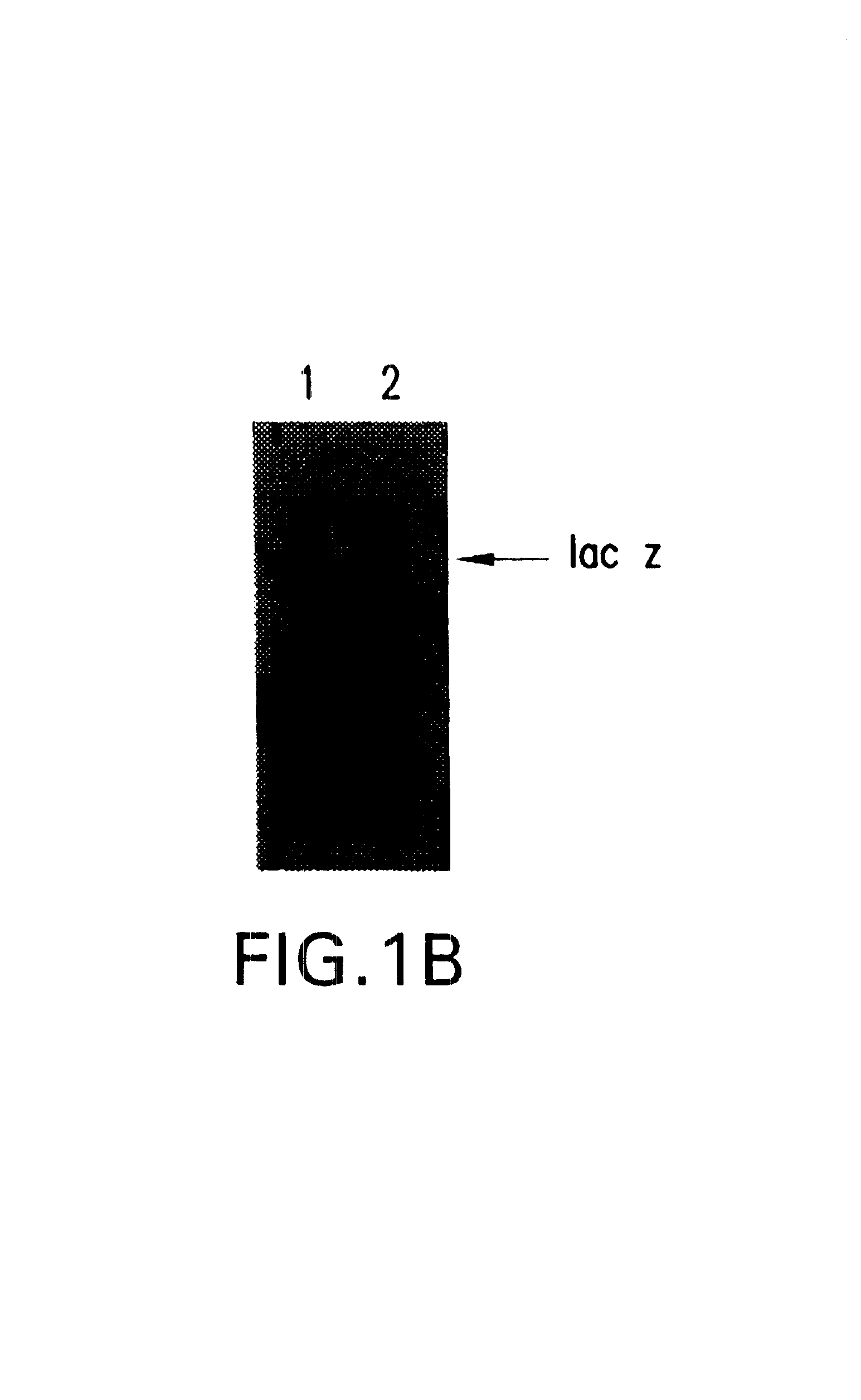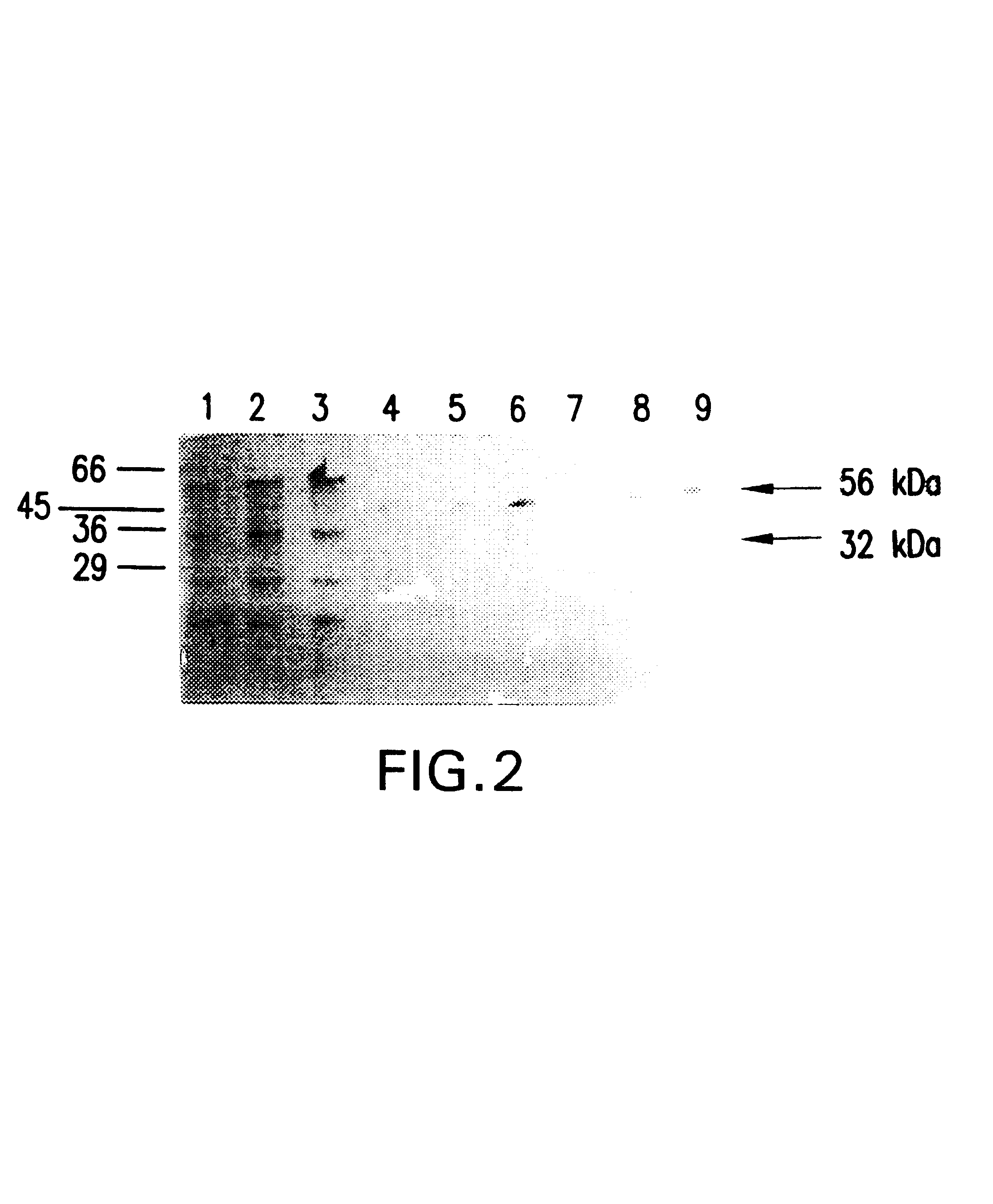Expression cloning processes for the discovery, characterization and isolation of genes encoding polypeptides with a predetermined property
a technology of polypeptides and cloning processes, applied in the field of expression cloning, can solve the problems of loss of growth control, uncontrolled cell proliferation, and development of severe diseases, and achieve the effect of suppressing the endogenous protein production of eukaryotic host cells
- Summary
- Abstract
- Description
- Claims
- Application Information
AI Technical Summary
Benefits of technology
Problems solved by technology
Method used
Image
Examples
example 1
B. Example 1
Compartment Screening and Identification of Nucleic Acids Encoding Proteins with a Predetermined Localization
Confluent cultures of BHK cells were infected with viral particles containing two expression systems with two different nucleic acids (pSinRep5 EPO and pSinRep5 lacZ), both packaged with the helper construct DHBB. One culture was not infected as a negative control (Vial 1, lane 1 in FIG. 1A). Twenty-four hours postinfection, the cells were starved in starvation medium lacking Methionine and Cysteine for 30 minutes. A pulse of 10 .mu.Ci 35S Met / Cys was added and replaced by fresh medium after 30 minutes. After an incubation of two hours, the cells and the supernatant were collected. The cells were resuspended in Laemmli buffer and boiled for 10 minutes. Five hundred .mu.l supernatant was added to 600 .mu.l methanol and 200 .mu.l chloroform. The upper phase was discarded and precipitated protein was pelleted by adding 800 .mu.l of methanol. Both the precipitated sup...
example 2
C. Example 2
Separation of Labelled Viral Particles from Secreted Protein for Semisolid Medium Screening
For optimal identification of expression systems encoding secreted proteins in semisolid medium, it is preferred that a) endogenous protein synthesis is suppressed; and b) labelled viral particles and other labelled soluble viral protein are prevented from interfering with the screen. Confluent layers of BHK 21 cells in 35 mm dishes were infected with pTEC5'2JCAT or pTE5'2JEPO double subgenomic infective viral particles at an MOI of 5. As a negative control, uninfected BHK 21 cells were used. Fourteen hours post infection, the mediurn was removed and the cells were overlaid with 4 mm of 0.8% agarose in RPMI 1640 medium containing 10 .mu.Ci .sup.35 SMet / Cys per dish. After gelling, the cultures were overlaid with 1 ml of Cys / Met free RPMI, and the medium was collected after 2 hours, 4 hours and 8 hours. The protein was precipitated and separated on a 15% SDS gel. The gel was exposed...
example 3
D. Example 3
Inhibition of Release of Viral Soluble Proteins
Confluent layers of BHK cells were infected with double subgenomic pTE5'2JCAT viral particles at an MOI of 5. Fourteen hours post infection, the medium was removed and the cells were overlaid with 4 mm of 0.8% agarose in RPMI 1640 medium containing 10 .mu.Ci .sup.35 SMet / Cys per dish and varying amounts of Mini Protean protease inhibitor cocktail solution (seven times concentrated as described in the manual, Boehringer Mannheim, Rotkreuz, Switzerland). One hundred .mu.l, 20 .mu.l, 10 .mu.l, 5 .mu.l and 1 .mu.l were used (see lanes 1-5 in FIG. 3). After gelling, the cultures were overlaid with 1 ml of Cys / Met free RPMI, and the medium was collected after 4 hours. The protein was precipitated and separated on a 15% SDS gel. The gel was exposed to an X-ray film overnight. The results (depicted in FIG. 3) demonstrated that release of viral protein was inhibited by addition of the protease inhibitor. At concentrations above 20 .m...
PUM
| Property | Measurement | Unit |
|---|---|---|
| size | aaaaa | aaaaa |
| melting point | aaaaa | aaaaa |
| melting point | aaaaa | aaaaa |
Abstract
Description
Claims
Application Information
 Login to View More
Login to View More - R&D
- Intellectual Property
- Life Sciences
- Materials
- Tech Scout
- Unparalleled Data Quality
- Higher Quality Content
- 60% Fewer Hallucinations
Browse by: Latest US Patents, China's latest patents, Technical Efficacy Thesaurus, Application Domain, Technology Topic, Popular Technical Reports.
© 2025 PatSnap. All rights reserved.Legal|Privacy policy|Modern Slavery Act Transparency Statement|Sitemap|About US| Contact US: help@patsnap.com



